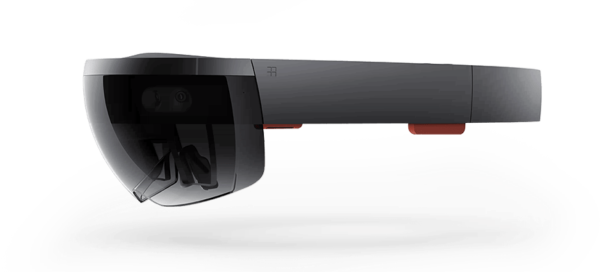Leaked HoloLens Videos Give A Glimpse Of The HoloLens Experience

Now that the HoloLens is already coming (for developers, at least for now), we are close to getting a glimpse of what we should expect from the augmented reality experience brought by the AR headset from Microsoft. And recently, there has been a confirmation of the expected on-screen experiences for the HoloLens with a set of leaked instructional videos showing day-to-day interactions within Windows 10 using the HoloLens.
Microsoft first unveiled their augmented reality headset HoloLens at a special Windows 10 event last year. Since then, we’ve seen some impressive demonstrations of the technology, showing even the simplest of everyday computing tasks can be done using augmented reality and become beneficial in our lives.
Following the announcement of the developer edition pre-orders for the HoloLens, a set of leaked tutorial videos showed up which is intended for a HoloLens application called Actiongram, a recently revealed drag and drop holographic ‘sticker’ app, which lets you drop 3D models into your real world surroundings. While the app itself seems gimmicky and somehow doesn’t have any significant use in personal computing and productivity, the videos walk users through the basics of how to launch Actiongram from the Windows Holographic equivalent of a start menu and generally interact with the user interface.
As of now, these videos give the richest glimpse on Windows Holographic running live in action, having a real-time look inside an augmented reality session and it gives you a glimpse at how Microsoft envisions human interaction with Windows by leveraging your natural input through hand gestures instead of the ubiquitous keyboard-and-mouse combo.
The HoloLens’ primary interaction method is via human hand gestures, interpreted by the headset. Microsoft have had to invent a new language in order for users to interact with Windows with just their hands, and you can see (and hear reference to) a few in the videos, which you will find in the end of this article.
The concept of augmented reality is as intriguing and challenging as it is interesting. This marks the early days for the HoloLens, but it’s interesting to watch it bloom and grow to become the envisioned future of human interaction with computers.
The developer edition of the HoloLens is to be made available to those who sign up to the HoloLens development program, costing a whopping $3,000 to be among the first in the world to get your hands (and eyes) on Microsoft’s AR headset. These units are due to begin shipping on March 30.
For more information on the HoloLens, please visit the following websites:
http://www.virtualrealitytimes.com/2015/08/02/how-microsoft-changing-minecraft-hololens/
http://www.virtualrealitytimes.com/2015/03/08/microsoft-will-bring-xbox-games-to-hololens/
http://www.virtualrealitytimes.com/2015/02/04/microsoft-hololens-everything-you-need-to-know/

